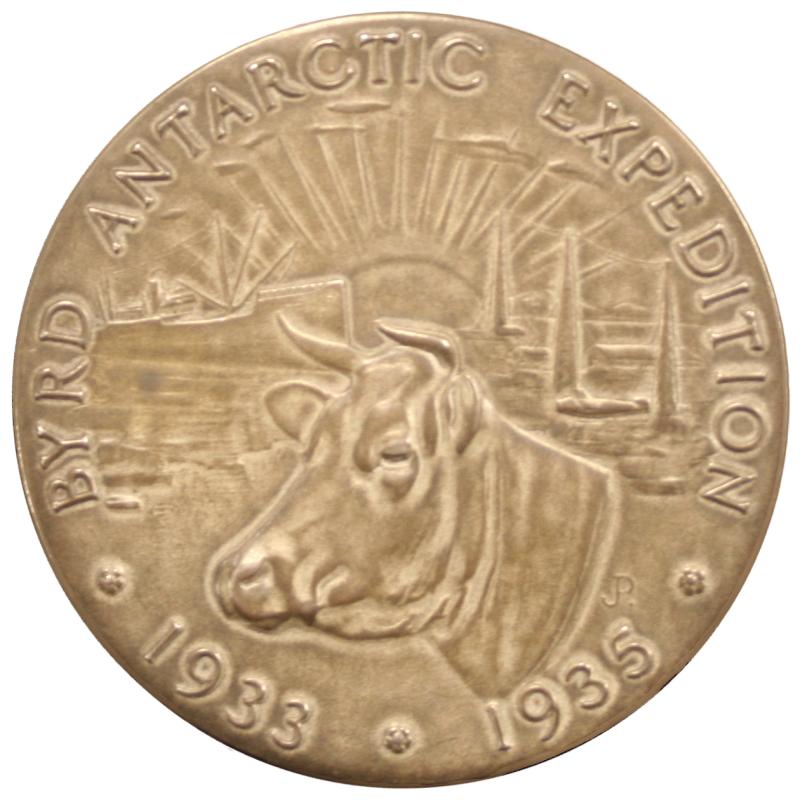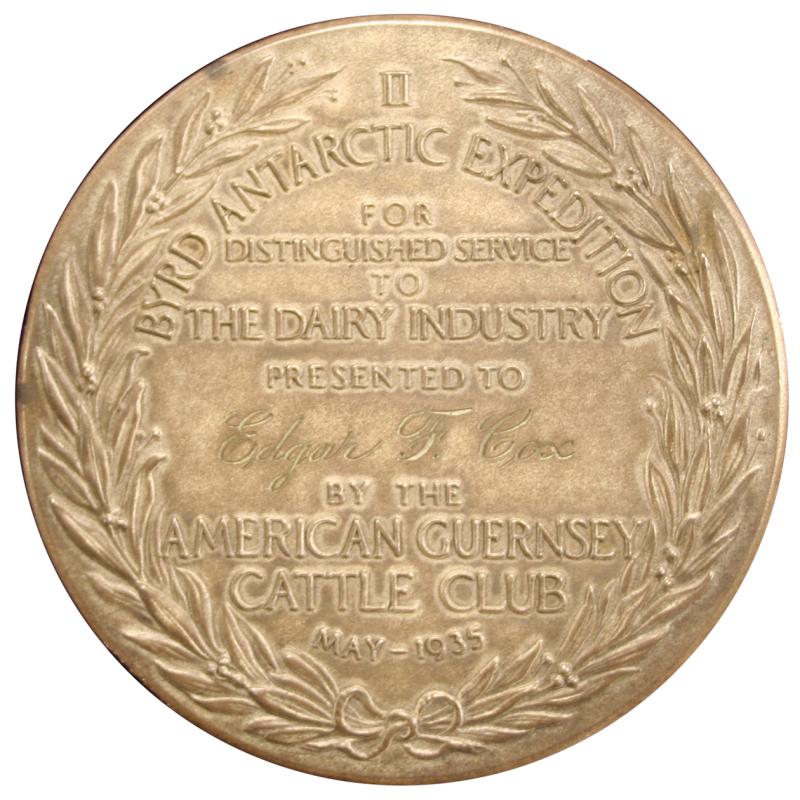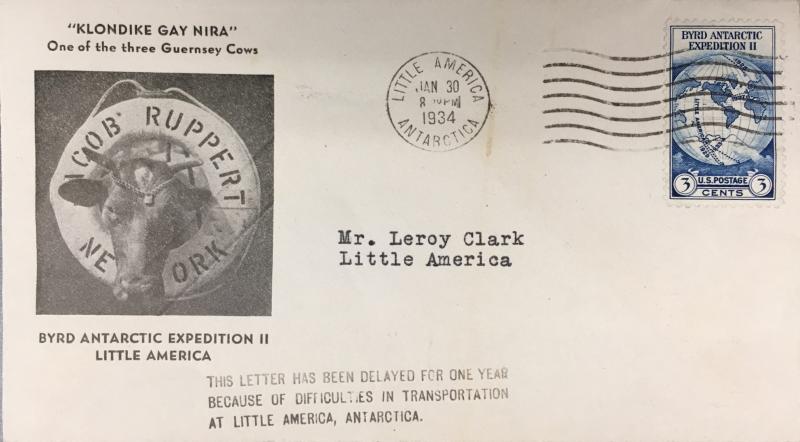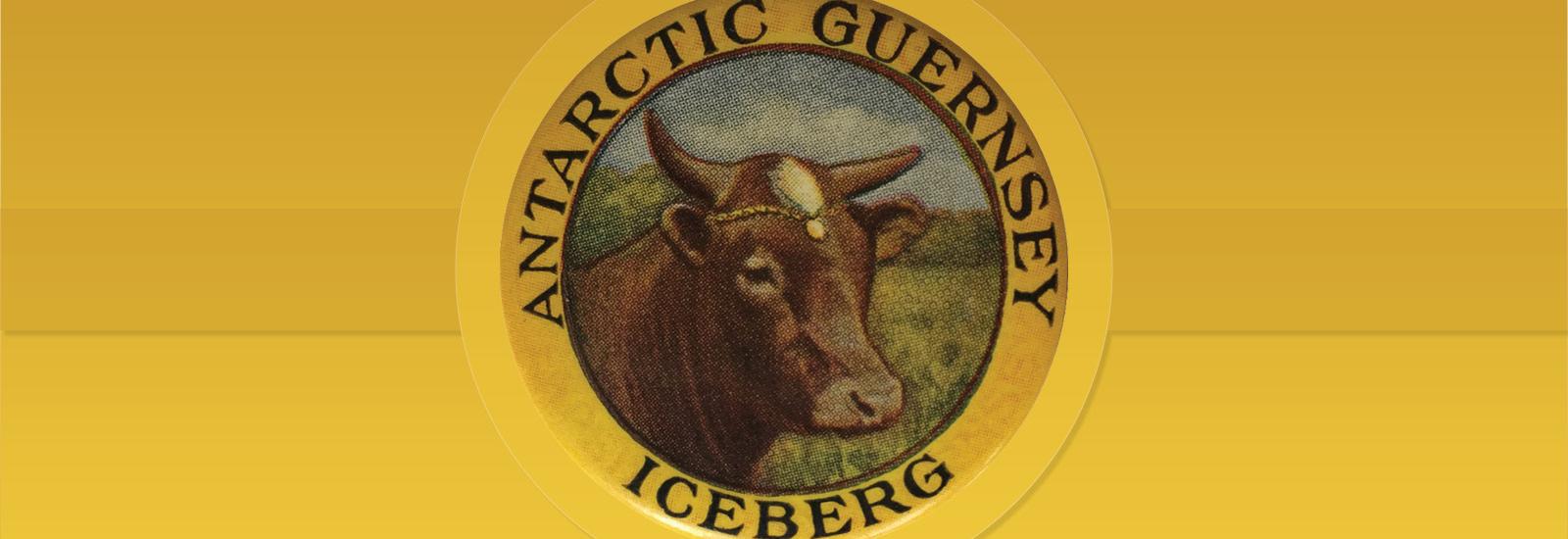— HISTORY CORNER —
How do you become the first milkman in Antarctica?
You might be surprised to learn that Admiral Byrd took three golden Guernseys on his second expedition to Antarctica, 1933-1935. While Byrd explained it as a way to provide fresh milk for the men, the real reason had much more to do with publicity. As Hanne Nielsen states in her paper, Hoofprints in Antarctica: Byrd, media and the golden Guernseys, “taking a dairy south was one way of ensuring ongoing media attention.”
The three cows came from three different dairy farms. Klondike Gay Nira, Deerfoot Guernsey Maid and Foremost Southern Girl would all arrive in Antarctica on board ship SS Jacob Ruppert. To add even more publicity value, Klondike Gay Nira was pregnant at the time they boarded; the hope was that she would give birth south of the Antarctic Circle. However, the baby calf was born just north of the Antarctic Circle, and was named Iceberg. Iceberg became an immediate celebrity, and news of the blessed event was covered in all of the major US news outlets of the time.
The expedition member tasked with caring for the cattle on route to Antarctica, as well as after they arrived, was Edgar Cox. Cox owned a dairy farm in Arcade, New York, and thus had experience caring for dairy cattle. During their tenure in Antarctica, Cox would live with the cows in the barn specifically designed and built for the purpose. The cows adapted well to life in Antarctica and actually provided more milk than the expedition members could use!



To learn more, read:
Admiral Byrd Takes Larro to the South Pole. Detroit, MI, Larrow Milling Company, 1934. https://hdl.handle.net/2027/coo.31924003005182.
Nielsen, Hanne E.F. Hoofprints in Antarctica: Byrd, media and the golden Guernseys. The Polar Journal, 17 November 2016. https://doi.org/10.1080/2154896X.2016.1253825
Additionally, the Richard E. Byrd Papers held by the Byrd Polar and Climate Research Center Archival Program are a rich source of information. The Polar Archives also holds the collection of the cow keeper Edgar Cox, and both collections document the cows in Antarctica in great detail. Contact the polar curator Laura Kissel to find out more!
Written by Laura Kissel, Polar Curator.
Video footage and editing by Pam Theodotou.

